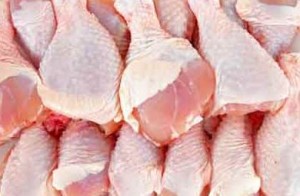Americans enjoy one of the world’s safest food and water supplies, in part due to a host of products of chemistry, from simple disinfectants such as chlorine and soap to modified atmosphere packaging.
But while dreadful diseases such as typhoid fever, cholera and tuberculosis have been virtually eliminated in the United States, there are 76 million cases of food borne illness here every year, leading to untold billions in costs, unnecessary suffering and nearly 5,000 deaths. Eradication of food borne diseases remains elusive. Disease causing microbes and pathogens are the primary culprit. That’s where chemistry can help, from farm to table.
Innovations in Food Safety
Food growers use chemical compounds to eradicate a plethora of disease carrying pests that compete for our food supply.
Chlorine disinfectants used in industrial food production penetrate the germ cell walls and membranes, bursting open the germs and leaving them unable to reproduce.
To identify disease causing “bugs” before they reach store shelves and our homes, the business of chemistry has created a DNA-based diagnosis to detect contamination in raw ingredients and finished foods. This Nobel Prize winning technology has become standard in the United States and much of the world to improve food safety.
Plastic packaging plays a major role in protecting fresh, processed and prepared food, as a trip down the grocery aisle can attest. Plastics’ unique properties allow food to remain sealed against air and grime, helping to prevent tampering while extending shelf life. Foods packaged in a modified gaseous atmosphere (replacing air with nitrogen and carbon dioxide, for example) resist mold and spoilage caused by microbes.
Modern refrigeration is made possible by plastics (insulation, liners, hoses, seals, etc.) and chemical refrigerants.
The World Health Organization estimates that diseases associated with dirty water kill at least 6,000 people every day. The most effective weapon against waterborne bacteria and viruses is chlorine chemistry, so water treatment facilities across the world rely on this basic element to clean and disinfect drinking water.
Our military makes extensive use of chemistry for its MREs (meals ready to eat)—they cook themselves through a chemical reaction, withstand extreme temperatures and are designed to last three years without spoiling, made possible by layers of resilient plastics.
Policies to Ensure Chemical Safety
Promoting the safe use of the essential products of chemistry is a shared responsibility of manufacturers, the government and those who use or sell chemical products. Manufacturers and government must work together to:
Develop, implement and comply with sound regulations so chemicals are safe for intended use.
Enhance scientific understanding of chemical safety.
Produce publicly accessible safety information.
Americans must feel confident that the federal regulatory system is keeping pace with the applications of chemistry. Our nation’s primary chemicals management law must be updated to adapt to scientific advancements and to promote that chemical products are safe for intended use—while also encouraging innovation and protecting American jobs.

